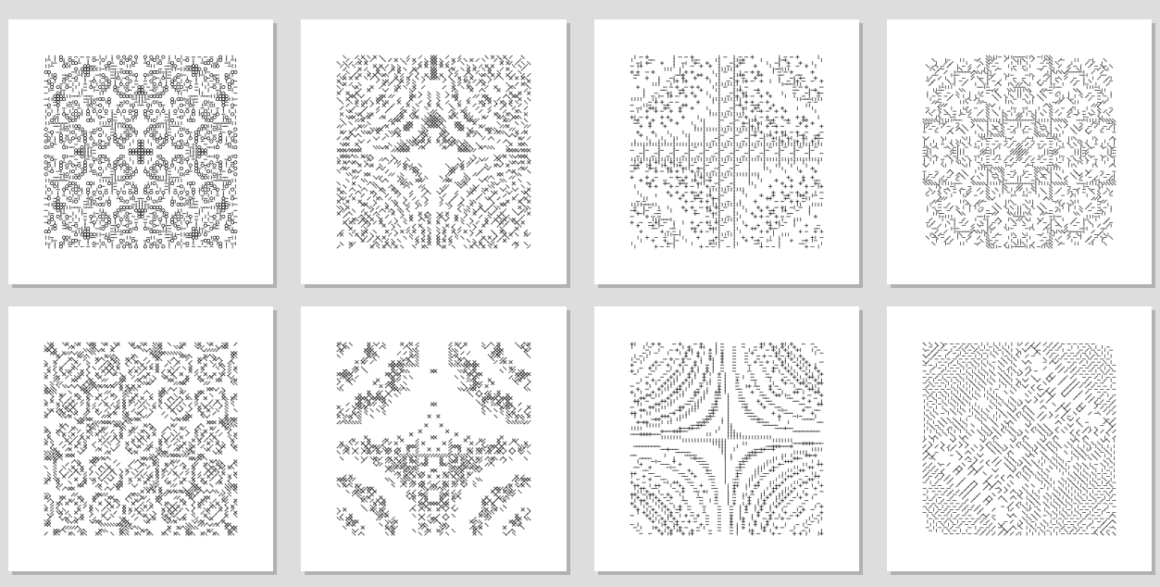In a groundbreaking moment for the digital art world, an exclusive interview on NFTNOW on February 19 unveiled one of the most significant on-chain digital art transactions to date. A collection of 10 Autoglyphs, created by the innovative minds at Larva Labs in April 2019, found a new home for a staggering 5,000 ETH (approximately $14.536 million). This sale, facilitated by the crypto art brokerage platform Fountain, marks a pivotal moment in the evolution of art and technology.
The Rarity of the Collection
What sets this transaction apart is not just the eye-watering figure but the uniqueness of the collection itself. These 10 Autoglyphs belong to one of only three “dev sets,” with each piece bearing a sub-100 series number. This rarity is underscored by the collector’s intention to share these pieces with the public by presenting them in museums and institutional settings, a move facilitated by art advisor Amanda Schmitt, known for her appearance on TIME magazine’s “Person of the Year” cover in 2017.
Autoglyphs: A Milestone in Generative Art
Autoglyphs stand as a landmark in the realm of NFTs and on-chain digital art, being the first generative art project fully on the Ethereum blockchain. The brainchild of Matt Hall and John Watkinson of Larva Labs, who also brought us CryptoPunks, Autoglyphs embody the intersection of art and technology. These 512 unique pieces are not just artworks but a testament to the innovation and creativity unleashed by blockchain technology.
The Acquisition: More Than a Transaction
This acquisition, as Amanda Schmitt reveals, is a testament to the evolving appreciation for digital and on-chain art. The collector, choosing to remain anonymous, represents a bridge between traditional and digital art worlds, recognizing the Autoglyphs’ connection to a rich lineage of digital, generative, conceptual, and minimalist art. The acquisition is not merely a financial investment but a significant endorsement of the digital art movement’s potential to stand alongside traditional art forms in importance and value.
A Reflection on Artistic Innovation and Heritage
Schmitt draws parallels between the Autoglyphs and pivotal movements in art history, from the abstract innovations of the 20th century to the conceptual art of Sol Lewitt and the institutional critique of Hans Haacke. She highlights the Autoglyphs’ algorithmic beauty and their role in pushing the boundaries of what art can be in the digital age. This acquisition is a recognition of the Autoglyphs’ place in art history, celebrating them as both a culmination of past artistic movements and a pioneering step towards the future.
The Future of Digital Art
The significance of this transaction extends beyond its historic value, signaling a bright future for digital art. As Schmitt notes, this is only the beginning for the collector’s journey in supporting and presenting digital art within institutional settings. This acquisition underscores the enduring interest and belief in the value of digital art, paving the way for further acquisitions and increased recognition of digital artists and their work.
TL;DR
A record-breaking sale of 10 Autoglyphs for 5,000 ETH highlights a significant moment in digital art history. This acquisition not only underscores the value and rarity of these pieces but also signifies a broader acceptance and appreciation for digital art within traditional art circles. The future looks bright for digital art, with this sale marking just the beginning of a growing trend of institutional recognition and support.
The post Bridging the Past and Future: The Historic Autoglyphs Acquisition and Its Impact on Digital Art appeared first on NFT CULTURE.
